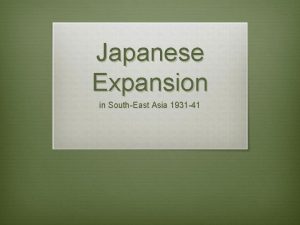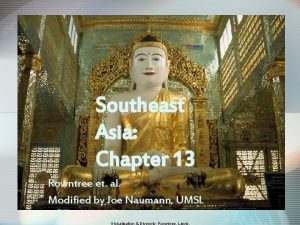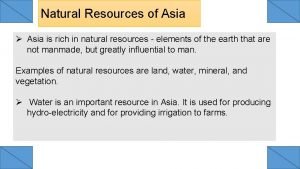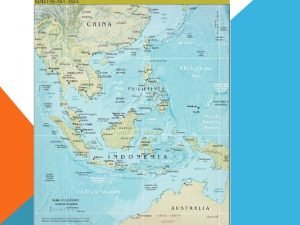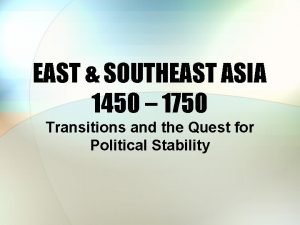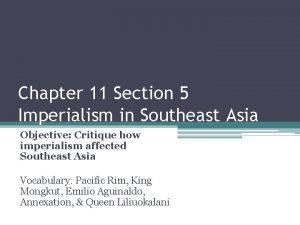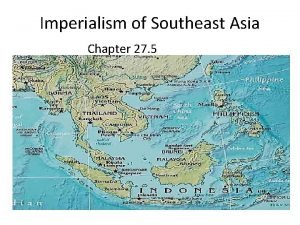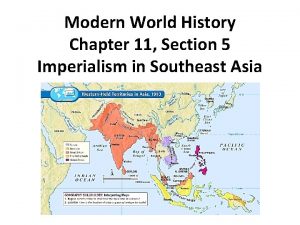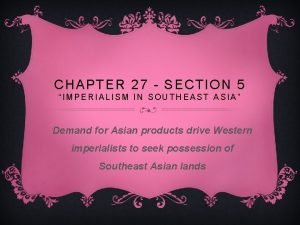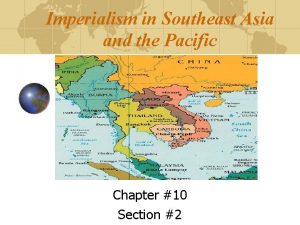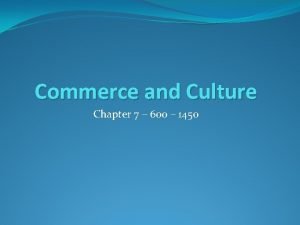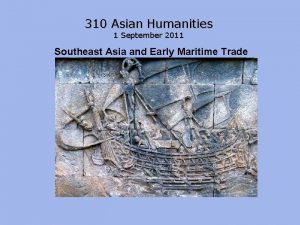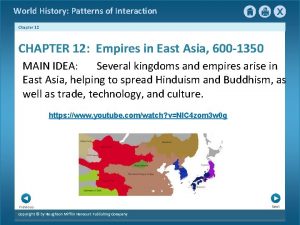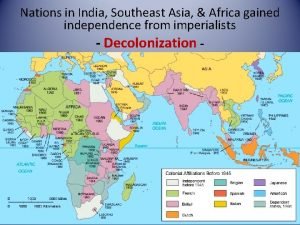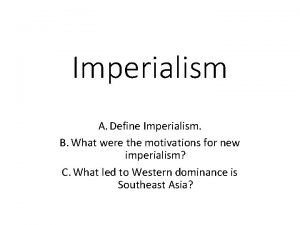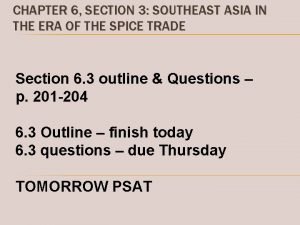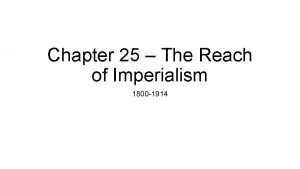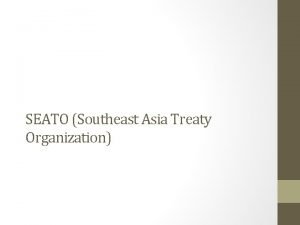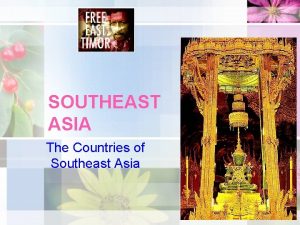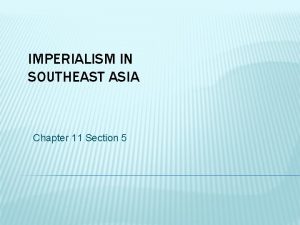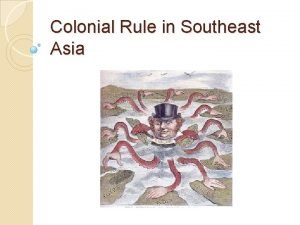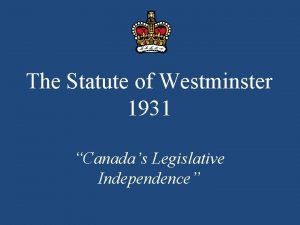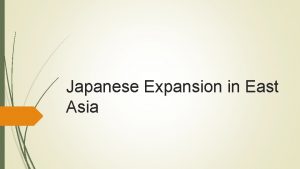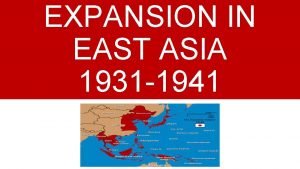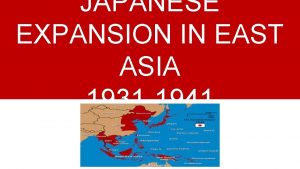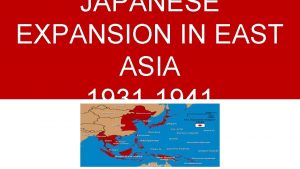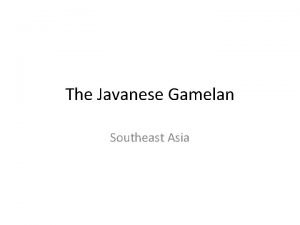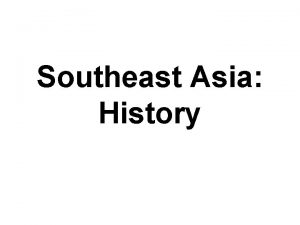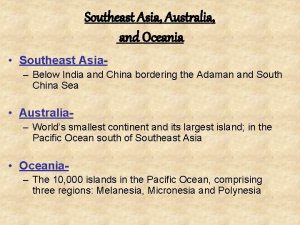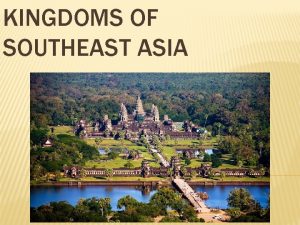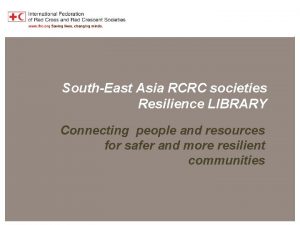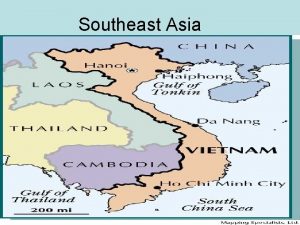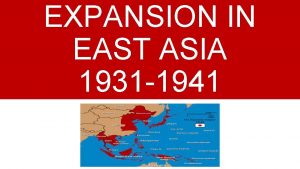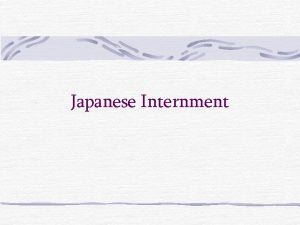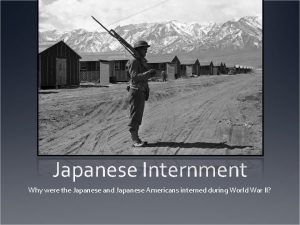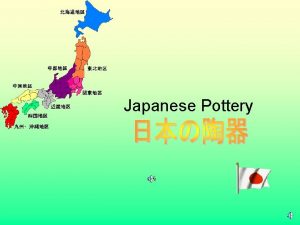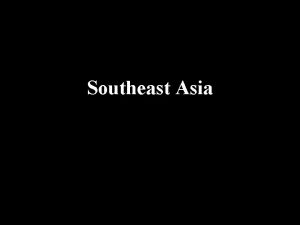Japanese Expansion in SouthEast Asia 1931 41 Context





























- Slides: 29

Japanese Expansion in South-East Asia 1931 -41

Context v Between 1931 -41, Japanese foreign policy was defined by the growth of nationalism and the power of the military v Perspectives v From the early 30 s, Japan had planned a war with the aim of dominating Asia. War was inevitable and Japan only used negotiations to delay an international response to their expansion v Though Japan did plan imperial expansion, war was not inevitable. Japan may have been willing to achieve its aims through negotiation, and only prepared for war as a contingency v Japan may also have been forced into was by the actions of the U. S. Its claims were legitimate, but the U. S. and Britain were determined to contain it.

Causes of Japanese Expansion v By the 1930 s, Japan had fully modernized v Population was motivated to expand v Political and economic crises at home meant further aggression abroad v Chinese instability encouraged incursions on the mainland


Rise of the Kwantung v After the Russo- Japanese War, Japan took control of southern Manchuria v Railway managed by the Kwantung garrison v Kwantung Army because of stronghold of the Kodo-ha “Imperial War” faction, advocating for military dictatorship and aggressive expansion

Political Instability in China v Two political parties in China attempting to solve the problems of the Warlord Era (no central government) v GMD, Nationalists v CCP, Communists v 1924, Northern Expedition to reunite China v Ended in GMD (Chiang Kai-Shek) turning on the CCP and beginning the Chinese Civil War in 1927

Political Crises in Japan v Japanese concerned with the Northern Expedition, as they backed the Manchurian warlord Zhang Zuolin v Zhang grew to be too powerful, was targeted by the Northern Expedition v In 1928, Kwantung assassins acted without Japanese government consent and killed Zhang so that Chiang Kai-Shek would not gain influence in Manchuria

Political Crises in Japan v Emperor Hirohito ordered PM Tanaka Giichi to discipline the army v Could not due it as it would weaken the prestige of the army v Tanaka, ineffective, forced to resign v By 1929, the army can act independently without fear of consequence, undermining democracy

Political Crises in Japan v Next PM was the Minseito Party’s Hamaguchi Yuko v Could not solve the problems of the Depression v Cut government salaries, including the military v v Further enraged by agreements at the 1930 London Naval Conference November 1930, Hamaguchi shot by a rightwing radical and later died from his injuries

Economic Crisis v Great Depression called into question the entire world system and Japan’s parliamentary government v U. S. Smoot-Hawley Tariff Act increased duties on Japanese goods as much as 200% v Failures of the silk industry created rapid unemployment v Full control over Manchuria and its resources became even more important v Predicted to be a Japanese “lifeline” and “our only means of survival”


Economic Crisis v Zhang Zuolin was succeeded by his son Zhang Xueliang, who formed an agreement with the GMD v Kwantung thought that Manchuria would soon become impossible to attain v Kwantung Army plotted to seize Manchuria immediately, against the policies of the Cabinet and PM Wakatsuki v A letter from the Minister of War, General Minami, was intentionally not delivered to Kwantung officials, so that they may not defy the Emperor directly

Events in Manchuria, 1931 v Sept. 18, 1931 – Mukden Incident v Explosion on the Japanese-owned South Manchurian Railway v Accused Chinese nationals, really Kwantung agents v PM Wakatsuki ordered the “non-expansion of hostilities” v Kwantung Army had already moved into the surrounding countryside

Results of the Manchurian Crisis v Rest of the world did not yet understand the Kwantung’s position v Seemed to have abandoned internationalism and the Washington System v League with a strong condemnation v Japanese population begins to resent the world system as well, West seen as holding Japan back v Increasingly admiring the Nazi regime in Germany and neglecting its own parliamentary government

Results for Manchuria and China v By 1932, Manchuria was wholly occupied by the Japanese v Set up a puppet state under Pu Yi, known as Manchukuo v Fighting also broke out in Shanghai v Nearby bombing of the Chinese city of Chapei intensified Anti. Japanese sentiments around the world

Results for the Chinese GMD v Chiang Kai-Shek called the League of Nations v Focused on the CCP v “The Japanese were a disease of the skin while the communists were a disease of the heart. ” v Did not resist or negotiation with the Japanese v Thought Japan would exhaust itself v China continued to bleed Manchurian territory v 1933 Treaty of Tanggu formalized the Japanese victory

Results for the Japanese Government v Japan benefitted from the occupation of Manchuria, but maintaining an army led to increased taxation v Putting itself into a position to defend against the Chinese, Soviets, and U. S. v Result of decision making by the army, not the government v Now had the full public support v Called the “heroes” of Manchuria v Government had to go along with it

Internal Military Factions


Factionalism and Assassination v May 1932, army and navy officers attacked banks, party officials and police in Tokyo; PM Inukai assassinated v Trial of the conspirators brought them sympathy v Known as the “May 15 th Incident”, enhanced the power of the army and name and further undermined the democratic government v PM Saito (May 32 – July 34), appointed three Kodo- ha leaders; discovered their plot against him; promoted a Tosei-ha to Minister of War

Factionalism and Assassination v PM Okada’s (July 34 – Feb. 37) reign saw the Kodo- ha assassination of the Tosei-ha leader, General Nagata v Aizawa, the assassin, was found guilt and executed; young Kodo-ha officers attempted a revolt in February 1936, seizing parliament buildings, the war office and police headquarters v Eventually this was quelled and the Kodo-ha faction was discredited; this allowed the Tosei-ha to take the lead role in army planning and more firmly control the country

Factionalism and Assassination v v Okada resigned; new PM Hirota Koki was weak and often compromised with the military v Signed over political control to military officers v Expanded arms production and offered further support in Manchuria v Responsible for the Anti-Comintern Pact of Nov. 1936 The National Diet removed Kiki from office, only to replace him General Hayashi from Feb. to June of 1937 v This government was too divided, and he was replaced as PM by Konoye Fumimaro, who still could not restrain the army v General Tojo Hideki became Chief of Staff to the Kwantung Army and ordered the invasion of mainland China in July, 1937

Sino-Japanese War of 1937 v Fighting broke out after the Marco Polo Bridge incident, outside of Beijing, o July 7 v v The end of the month saw the Japanese occupy Beijing and continue fighting in Shanghai v v Drove inland, forced mass exodus of the Chinese people Nanjing fell on Dec. 13 v v Japanese reinforcements brought in from Manchuria and Korea Former Nationalist capital, citizens subjected to appalling Japanese atrocities PM Konoe now forced to call for all out war with China

Second Sino-Japanese War v Japan underestimated Chinese resolve and the effect of the Rape of Nanjing v Chinese refused to agree for peace v Japanese supply lines were overextended, vulnerability to guerrilla attacks v November 1938, Japan declared a union between Japan, Manchukuo and China – New Order in East Asia, hoping to end the war v A war that could not be won

Second Sino-Japanese War v Multi-party politics suspended until July 1940 when the Imperial Rule Assistance Association formally replaced all political parties v Firm military control v PM Konoe resigned, replaced by Tojo v Began further expansion efforts into Indo-China in November 1940

Tripartite and Neutrality Pacts v Tripartite Pact signed in Sept. 1940 v v Soviet-Japanese Non. Aggression Pact in April 1941 v v Agreed that Germany and Italy would dominate Europe and leave Asia to Japan Allowed the Japanese to focus their efforts south Moved forces throughout southern Indo-China, attacking Western colonies in Nov. 1941 v Expanded its ambitions to the Greater East Asia Co. Prosperity Sphere


Attack on Pearl Harbor v v America froze Japanese assets after the Indo-China action v Japanese could not sustain a war without U. S. trade v War of conquest to gain resources became the only option Negotiations between the two countries continued throughout 1941, only leading to deadlock v Military made alternative plans

Attack on Pearl Harbor v Nov. 2 it was decided that American demands could not be met v Dec. 7, 1941 Japanese bombers attacked U. S. ships and bases at Pearl Harbor, hoping to destroy the U. S. Pacific Fleet v Huge losses for the Americans, but did not eliminate aircraft carriers v United States outraged by the two-faced Japanese interactions and declared war v Japanese simultaneously attacked around the Pacific and WWII in that region was on
 Growth of the japanese empire 1931-41
Growth of the japanese empire 1931-41 Countries in southeast asia
Countries in southeast asia Landforms in the southwest
Landforms in the southwest Is asia rich in natural resources
Is asia rich in natural resources Climate regions in east asia
Climate regions in east asia Southeast asia 1450 to 1750
Southeast asia 1450 to 1750 Spice t chart examples
Spice t chart examples Imperialism in southeast asia chapter 11 section 5
Imperialism in southeast asia chapter 11 section 5 Customs lawyers southeast asia
Customs lawyers southeast asia Mainland of southeast asia
Mainland of southeast asia Imperialism in southeast asia chapter 27 section 5
Imperialism in southeast asia chapter 27 section 5 Chapter 11 section 5 imperialism in southeast asia
Chapter 11 section 5 imperialism in southeast asia Imperialism in southeast asia chapter 27 section 5
Imperialism in southeast asia chapter 27 section 5 Imperialism in southeast asia and the pacific
Imperialism in southeast asia and the pacific Sea roads as a catalyst for change southeast asia
Sea roads as a catalyst for change southeast asia Southeast asian alphabets
Southeast asian alphabets Chapter 12 section 5 kingdoms of southeast asia and korea
Chapter 12 section 5 kingdoms of southeast asia and korea Is india southeast asia
Is india southeast asia Define imperialism
Define imperialism In 1500 mainland southeast asia was a relatively
In 1500 mainland southeast asia was a relatively Chapter 25 lesson 4 imperialism in latin america
Chapter 25 lesson 4 imperialism in latin america Countries in southeast asia
Countries in southeast asia Hoyt sector model
Hoyt sector model Ramon magsaysay seato
Ramon magsaysay seato Insular southeast asia
Insular southeast asia Chapter 11 section 5 imperialism in southeast asia
Chapter 11 section 5 imperialism in southeast asia Colonial rule in southeast asia
Colonial rule in southeast asia Chapter 15 lesson 1 physical geography of north africa
Chapter 15 lesson 1 physical geography of north africa Expansión colonial en asia
Expansión colonial en asia Statute of westminster 1931
Statute of westminster 1931
